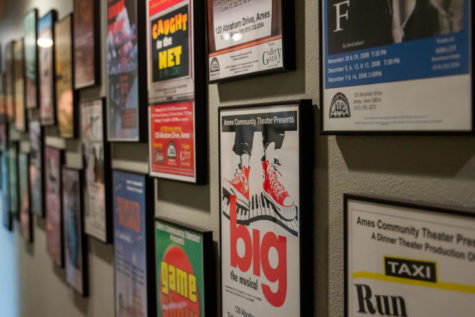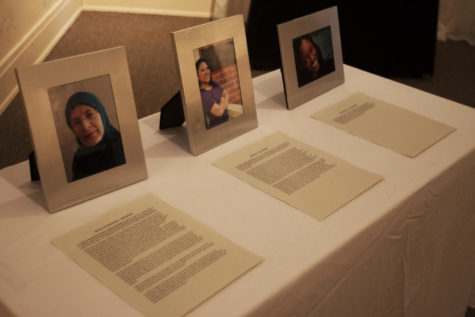Five books to read during the last weeks of summer
August 3, 2011
Summer is winding down, and the beginning of the fall semester is so close you can almost smell the scent of dry-erase markers in the air. You have only a few precious weeks of freedom left, and you want to make them count. But the moment you step outside, you can barely breathe. The humidity is grueling; the blazing summer sun makes it unbearable. Doing anything strenuous outdoors is just out of the question.
To beat the heat, but still savor the last few weeks of summer, grab a book. Let a book transport you to another place or time — perhaps a place where it’s not so hot and a time when school is not a few weeks away. In no particular order, here are five books to help you end your summer the right way.
“The Great Gatsby” by F. Scott Fitzgerald
It’s likely you have either read or heard about “The Great Gatsby.” If you’re not familiar with it, to sum the book up in a few words, “The Great Gatsby” is about love, money and betrayal.
The novel is set in New York City during the Jazz Age. The story begins with Nick Carraway, the narrator, moving to the West Egg district of Long Island to break into the bond business. His house is right next to a mansion owned by the mysterious Jay Gatsby. Carraway’s cousin, Daisy Buchanan, lives with her husband in East Egg, the adjacent district.
Through Carraway’s naïve, innocent eyes, Fitzgerald weaves a tale of corruption and greed, which ends in tragedy. He includes no dragons, wizards or vampires, but with interesting, complex characters and strong narration, Fitzgerald keeps his readers turning page after page of his novel. He has kept readers across generations enthralled for almost a century.
“Breakfast at Tiffany’s” by Truman Capote
When someone says “Breakfast at Tiffany’s,” an image of Audrey Hepburn as Holly Golightly will appear in many people’s minds. The film is based on Truman Capote’s novel of the same name. Though the both the movie and the book are marvelous, I prefer the book.
Truman Capote’s “Breakfast at Tiffany’s” tells the story of a man, the unnamed narrator, who develops a friendship with New York socialite Holly Golightly. Golightly is a glamorous, confident woman on the outside, but a confused, lost girl on the inside. Throughout the story, the narrator starts scraping away Golightly’s strong front. The relationship between the narrator and Golightly is what really makes “Breakfast at Tiffany’s” the powerful book that it is.
Though the narrator and Golightly are romantically involved in the film version, they aren’t in the book. And that’s what makes the book better than the movie. In both the movie and the book, Golightly has many romantic partners, but she never really develops deep feelings for any of them.
At the end, although it is never explicitly stated, you can tell that she does have feelings for the narrator, and it’s quite obvious that he reciprocates those feelings. As Golightly says in the book, “If you let yourself love a wild thing, you’ll end up looking in the sky.”
“Dear John” by Nicholas Sparks
Nicholas Sparks knows how to write popular romance novels. He has written “The Notebook,” “Message in a Bottle,” “Nights in Rodanthe,” “A Walk to Remember” and “The Last Song,” all of which have been made into movies. My favorite novel he has written is “Dear John,” which was made into a film.
“Dear John” is narrated by John Tyree, a rebellious man from North Carolina. When the novel begins, Tyree is on leave from the army at his home in North Carolina. While on a beach, Tyree meets Savannah Curtis, a young woman who is in his state doing mission work.
Tyree and Curtis eventually fall in love, but Tyree has to leave in order to finish his tour of duty. When he returns home, he’s soon forced to leave again when planes strike the Twin Towers. Throughout the ordeal, Tyree and Curtis communicate through letters. In large part, these letters are what keep John fighting.
While the relationship between Tyree and Curtis is interesting and captivating, the relationship between Tyree and his father is what makes “Dear John” better than any other run-of-the-mill romance novel. Tyree’s father has an undiagnosed case of Asperger’s syndrome, a disorder that makes it difficult for sufferers to communicate and empathize with others.
Due to his father’s disorder, Tyree finds it difficult to understand him. It is heart-wrenching to read about how both men want to express their love to one another, but are unable to. The delicacy with which Sparks renders their relationship makes “Dear John” worthy of a spot on this list.
“Catcher in the Rye” by J.D. Salinger
“Catcher in the Rye” is all about teenage angst. This book is about Holden Caulfield, a young man who is terrified of growing up. Of course, he has no idea that he has this fear. Instead of trying to make his fear subside, he rebels against everything and everyone around him.
The novel is narrated by Caulfield, but he tells his story sometime after the events in it take place. The story he tells begins with him attending a prep school. However, he is expelled from the school after failing four out of five of his classes.
Caulfield decides to explore Manhattan before returning home. On his journey, he desperately wants to have sex. However, when he hires a prostitute for this purpose, he becomes uncomfortable and tells her to leave.
“Catcher in the Rye” is about a young man who is caught between adolescence and adulthood. He is interested in becoming an adult and not having to be told what to do, but he is also terrified of everything that comes with adulthood.
Above all else, Caulfield treasures the notion of eternal innocence. He wants to protect children, especially his little sister Phoebe, from being corrupted by the “phoniness” of the adult world. As college students, we are on the brink of adulthood, and many of us share his fears.
“The Girl with the Dragon Tattoo” by Stieg Larsson
The first installment of a trilogy, “The Girl with the Dragon Tattoo” by Swedish author Stieg Larsson is a suspenseful thriller that takes its readers on a raw, uncensored journey through a world of violence and corruption. Ultimately, it delivers a shocking ending that will make you want to pick up the next two books in the series.
“The Girl with the Dragon Tattoo” tells the story of Mikael Blomkvist, publisher of the political magazine “Millennium,” and his attempts to restore his credibility after losing a libel case against a rich industrialist. When Henrik Vanger, CEO of Vanger Enterprises, asks him to find out who killed his niece, Harriet, he begins investigating her death.
Throughout his investigation, Blomkvist is assisted by super hacker, Lisbeth Salander, who is the titular girl with the dragon tattoo.
Salander’s appealing boldness is one reason Larsson’s trilogy has done so well. In an age of damsels in distress, Salander is the exact opposite. We learn that when Salander was 12 years old, she set her father on fire after seeing him beating her mother. This action caused Salander to be sent to a psychiatric hospital. Because of her traumatic past, Salander developed a tough, antisocial personality.
Although Blomkvist is the main character in the beginning of the book, Salander quickly outshines him, becoming the novel’s undisputed star.
















